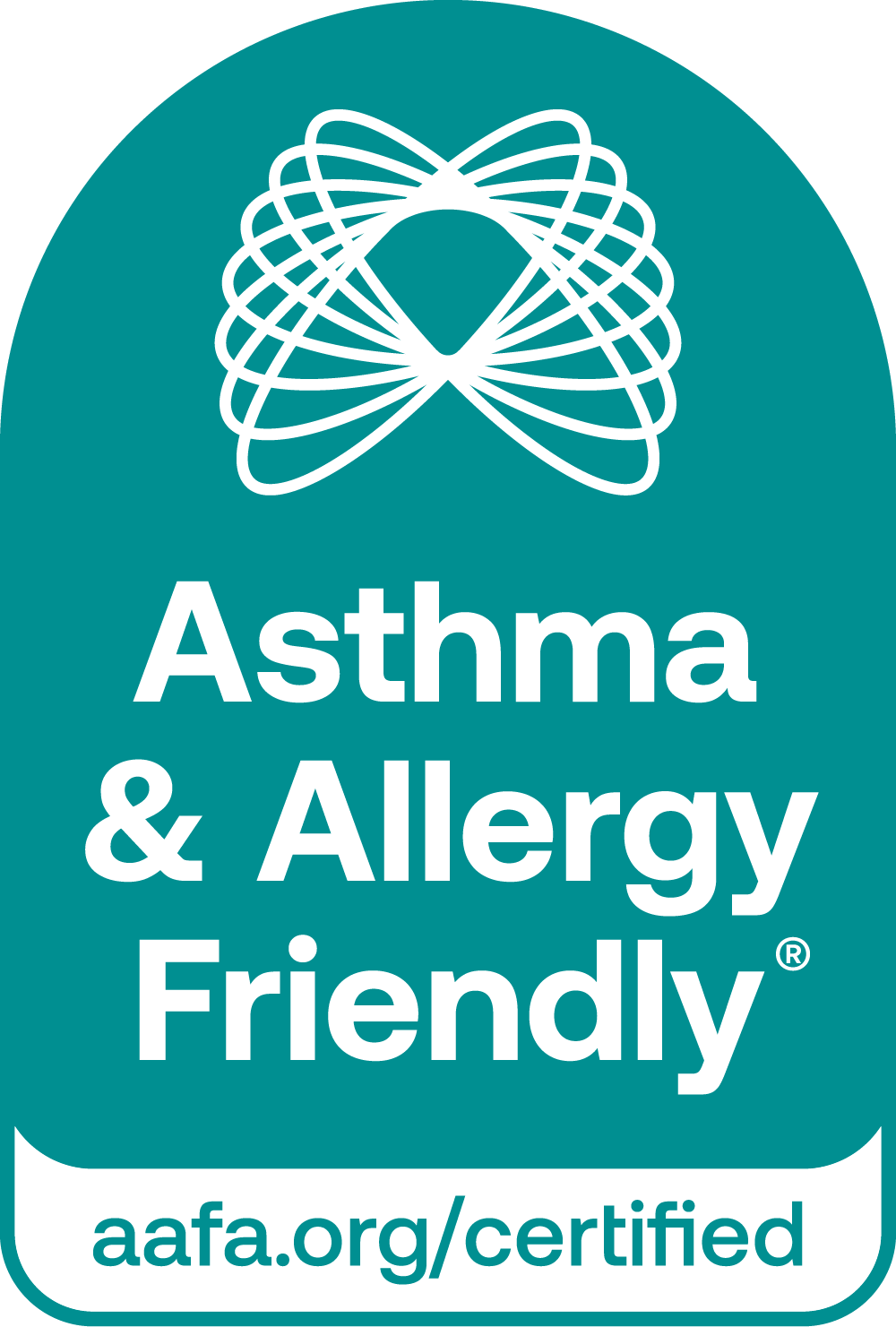 A stuffy nose. Scratchy throat. Difficulty breathing. It’s bad enough when spring allergy season reaps its ugly head, but when the things in your home trigger your asthma and allergies too, you feel like you’re in an endless battle to feel healthy.
A stuffy nose. Scratchy throat. Difficulty breathing. It’s bad enough when spring allergy season reaps its ugly head, but when the things in your home trigger your asthma and allergies too, you feel like you’re in an endless battle to feel healthy.
“Many household goods are hidden sources of asthma and allergy triggers,” says Dr. Cary Sennett, President and CEO of the Asthma and Allergy Foundation of America. “Fortunately, you can breathe easier by shopping smarter. By keeping a few tips in mind, you’ll be able to select products that reduce the likelihood of flares or attacks.”
Dr. Sennett and the experts at AAFA offer these shopping tips to limit asthma and allergy triggers in your home.
1. Look for the asthma & allergy friendly mark.
By being selective in what you purchase, you can dramatically impact asthma and allergy triggers in your home. The first step when shopping is to look for AAFA’s asthma & allergy friendly Certification Mark. This strict scientifically-based program was created 10 years ago to test products from cleaning supplies to toys and more to ensure they’re suitable for families with asthma or allergies. Feel confident when you look for the mark in stores or online. For a full list of products and where to find them, visit www.aafa.org/certified.
2. Avoid trouble cleaning product ingredients.
Removing allergens in the home requires regular cleaning, but oftentimes the cleaning products themselves can trigger asthma and allergy attacks. It’s best to avoid products with strong odors. If you must use strong cleaning products, try wearing a mask that covers your nose and mouth.
3. Buy breathable bedding to sleep well.
You spend one-third of your time in the bedroom, so it’s important to purchase products that won’t trigger your allergies or asthma. Look for bedding where the outer fabric is an effective allergen barrier, plus it can easily be cleaned to remove allergen accumulation. Additionally, bedding must be breathable to ensure comfort and contain no chemicals known to trigger asthma and allergy symptoms.
4. Research air cleaners and humidifiers that boost air quality.
Good indoor air quality is vital for families living with allergies and asthma. First, look for the asthma & allergy friendly Certification Mark. For humidifiers, look for options that maintain appropriate moisture levels while sanitizing the water. For air cleaners, look for independent testing that proves the device reduces allergens from the air by removal and not just redistribution.
5. Use a high-quality vacuum regularly.
Vacuuming once a week is important for reducing allergens, but if you don’t get a good vacuum you may simply be redistributing those irritants throughout your house. A certified vacuum will have a high quality air filtration system that captures even microscopic particles. Furthermore, the vacuum should not release irritants when you have to change the bag, either.
6. Gift toys that inspire smiles rather than cause sniffles.
For children, a favorite teddy should provide comfort, not sniffles and sneezes. Unfortunately, doctors often recommend removing stuffed toys from children with asthma and allergies. Because stuffed toys are similar to filled bedding products, they can house dust mites and other allergens as well as contain dyes that could irritate a child’s sensitivities. Look for toys that earn the certification. This means that the toy can easily be cleaned to remove allergen accumulation, contains no chemicals known to trigger allergies or allergens, plus the colors will not bleed from rubbing or saliva.
For more smart shopping tips, including what to look for in washers, dryers, paint and more, download the AAFA Certified Products Guide at www.aafa.org/certified.
